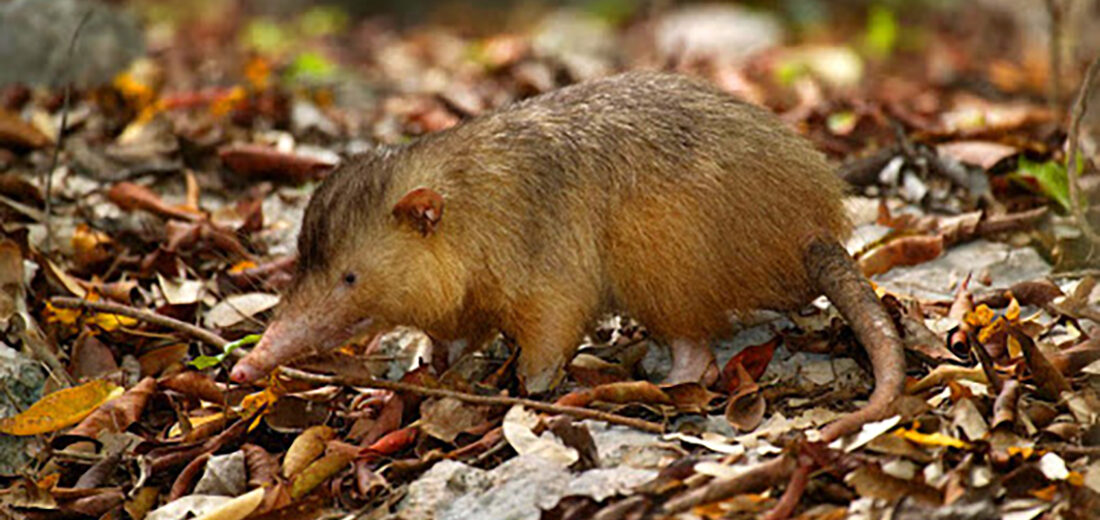
Surviving the Cretaceous-Paleogene mass extinction, it’s the solenodon. Solenodons are some of the most unusual, unique, and rare mammals in the world, hailing only from the islands of Cuba and Hispaniola. These fascinating critters have multicolored fur, rat-like tails, and look an awful lot like a fat shrew. Solenonons are among only a handful of venomous mammals, like the platypus.
First the Stats…
Scientific name: Solenodon
Weight: Up to 2 lbs.
Length: Up to 12 inches, plus a 10 inch tail
Lifespan: Up to 11 years
Now on to the Facts!
1.) They are only known to drink standing water while bathing. Yummy. Dirty bath water!
2.) A solenodon injects its venom, similar to a snake, through specially modified teeth. The second lower incisors have evolved special grooves that deliver the venom.
3.) These animals have very flexible noses that operate on a ball-and-socket joint. They also have a very good sense of smell.
4.) Solenodons are nocturnal (active at night).
5.) Being omnivores, they will eat just about anything they can find. But their primary foods are invertebrates like worms, grubs, and insects. Plus they will consume roots, fruits, and vegies.
But wait, there’s more on solenodon!
6.) Even though they do bathe occasionally, they still emit a strong musk-like odor that smells like a goat. I told you they’re strange.
7.) The solenodon’s nipples can be found near their butt. The female solenodon gives birth to 1 – 3 young at a time. However, only 2 babies will survive; seeing as she only has 2 nipples. Only the 2 strongest will be able to feed, leaving the weakest to starve.
Did you know…?
A small injection of their venom can be fatal to mice in just minutes but only causes a great deal of pain to humans.
8.) Unable to jump and walking around with a very clumbsy gait, they are capable of running and climbing very quickly! Also, they grunt like pigs when they feel scared, and also make cries that sound like a bird.
9.) Their main predators are cats, dogs, and mongooses. Even though they are venomous, these predators are capable of killing solenodons quite easily. Seeing as one defense mechanism is to curl up and hide their head, in the hopes that the predator will ignore them and leave. I’d stick to the venomous bite, my friend.
10.) They don’t have very good eyesight so they use, aside from vibration and smell, echo location to find prey items!
Now a Short Solenodon Video!
Also, check out the Critter Science YouTube channel. Videos added frequently!
Want to suggest a critter for me to write about? Let me know here.



